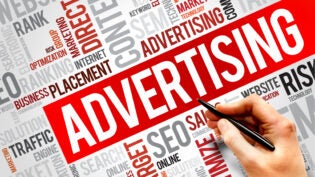
Remember Yellow Page’s “Let Your Fingers Do the Walking” slogan? That simple tag and the campaign surrounding it creatively expressed the value of the Yellow Pages for the average consumer: one book that contained the names, addresses and phone numbers of virtually every local business offering whatever particular good or service you were looking for. In fact, the slogan was considered good enough to earn an honorable mention in Ad Age’s 1999 Top 10 Slogans of the Century awards.
Let Your Fingers Do the Walking
Looking at the Yellow Pages effect through a modern day lens, one could even say that the Yellow Pages was the original search engine, as it provided a centralized means of search and discovery for countless millions of consumers. Over time, the utility and ubiquity of the Yellow Pages guaranteed its role as an essential element of the US commercial paradigm, and by extension, a powerful brand legitimizer. After all, how could you trust a company couldn’t be bothered to list themselves in the Yellow Pages?
From my perspective, the most effective Yellow Page Ads were the half or full page ones which usually contained one or more pictures of a particular company’s place of business, featured product, or even its owner. Such ads conveyed brand legitimacy and instilled a measure of semi-conscious trust in the mind of the consumer. I suppose this makes sense, as we humans tend to trust the tangible; we place more credence in that which we can see for ourselves—a picture is worth 1,000 words, and all that.
It’s too bad the technology wasn’t there for those Yellow Page ads to somehow have included video. After all, if a static (still) picture is worth 1,000 words, surely a dynamic (moving) video must be worth a helluva lot more than that. Imagine the legitimacy and trust a brand could’ve garnered by embedding an in-ad video—perhaps a product feature, a how-to, an intimate walk through of the company’s digs or even a personal message from employees and owner(s).
Boy, wouldn’t that’ve been great.
I think you know where I am going with this…
Search Engine as Yellow Pages
Let’s extend the search-engine-as-Yellow-Pages analogy to its logical conclusion. If the search engine is the modern-day Yellow Pages, a brand’s website is its “ad,” and the written copy, images and videos housed on the website collectively form its content.
This is good news, for unlike businesses advertising in the original (offline) Yellow Pages, today’s brands are now able to use all kinds of content media—including video—to more effectively convey their brand message. This simple fact is not lost on the modern day consumer.
Today’s computer-literate, smartphone-toting consumers are increasingly turning to online video for entertainment and information discovery, two broad actions which both ultimately influence purchase decision. A new survey from Animoto designed to explore how online video impacts consumer decisions and drives brand engagement for small businesses bears this notion out. The survey found the positive impact of online video on consumer brand perception:
- 96% of respondents agreed that videos were helpful when making online purchases
- 71% of respondents said that watching video content leaves them with a positive impression of the brand
- 64% of respondents find it useful to watch videos to learn more about the company from whom they are considering making a purchase
- 58% of consumers consider companies that produce video content to be more trustworthy.
- 93% of respondents find video helpful for post-purchase instruction
The Value of Online Video for Brands
Taking a cue from the Animoto survey, here’s my take on the value of online video for brands:
- Builds brand trust and legitimacy with consumers
- Creates three-dimensional, intimate brand awareness (YouTube 2nd largest search engine on earth)
- Helps brands efficiently convey large amounts of information quickly
- Drives purchase action and stimulates post-purchase consumer engagement
Perhaps most importantly, online videos can be made relatively quickly and inexpensively. Today’s consumers are not particularly sensitive to production quality—they are looking for substance over form. As any parent with a smartphone will attest, you have to be especially lame to not record videos of your children when it is so darn easy to do so. The same is true for brands. There is something fundamentally de-legitimizing about a company that can’t be bothered to press a few buttons and show themselves off to the world.
So get off yourself and hit the record button. It may just save your brand.
This article was originally published by SyneCore
Published: March 25, 2014
2290 Views
2290 Views












